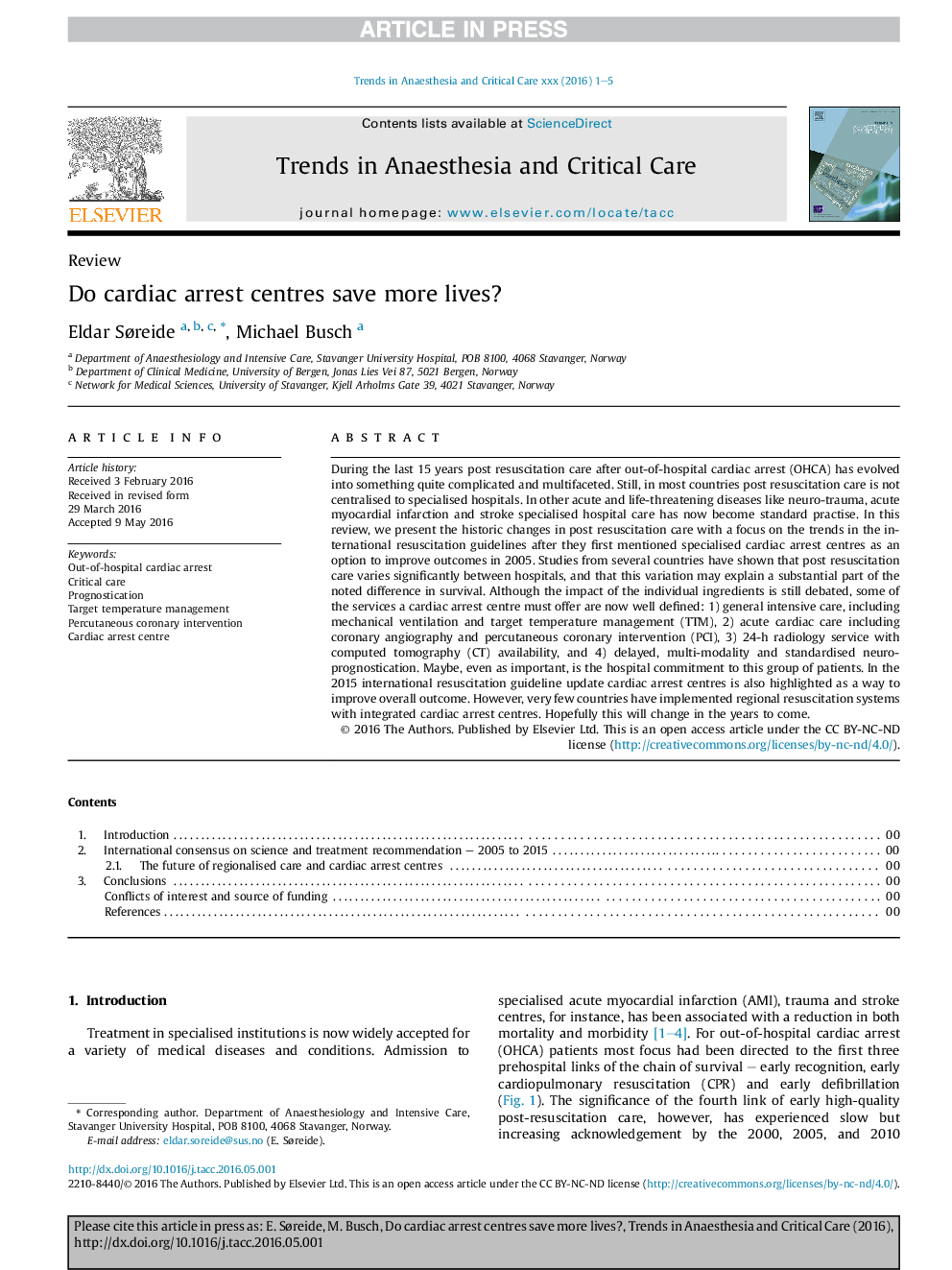| Article ID | Journal | Published Year | Pages | File Type |
|---|---|---|---|---|
| 5584256 | Trends in Anaesthesia and Critical Care | 2016 | 5 Pages |
Abstract
During the last 15 years post resuscitation care after out-of-hospital cardiac arrest (OHCA) has evolved into something quite complicated and multifaceted. Still, in most countries post resuscitation care is not centralised to specialised hospitals. In other acute and life-threatening diseases like neuro-trauma, acute myocardial infarction and stroke specialised hospital care has now become standard practise. In this review, we present the historic changes in post resuscitation care with a focus on the trends in the international resuscitation guidelines after they first mentioned specialised cardiac arrest centres as an option to improve outcomes in 2005. Studies from several countries have shown that post resuscitation care varies significantly between hospitals, and that this variation may explain a substantial part of the noted difference in survival. Although the impact of the individual ingredients is still debated, some of the services a cardiac arrest centre must offer are now well defined: 1) general intensive care, including mechanical ventilation and target temperature management (TTM), 2) acute cardiac care including coronary angiography and percutaneous coronary intervention (PCI), 3) 24-h radiology service with computed tomography (CT) availability, and 4) delayed, multi-modality and standardised neuroprognostication. Maybe, even as important, is the hospital commitment to this group of patients. In the 2015 international resuscitation guideline update cardiac arrest centres is also highlighted as a way to improve overall outcome. However, very few countries have implemented regional resuscitation systems with integrated cardiac arrest centres. Hopefully this will change in the years to come.
Keywords
Related Topics
Health Sciences
Medicine and Dentistry
Anesthesiology and Pain Medicine
Authors
Eldar Søreide, Michael Busch,
